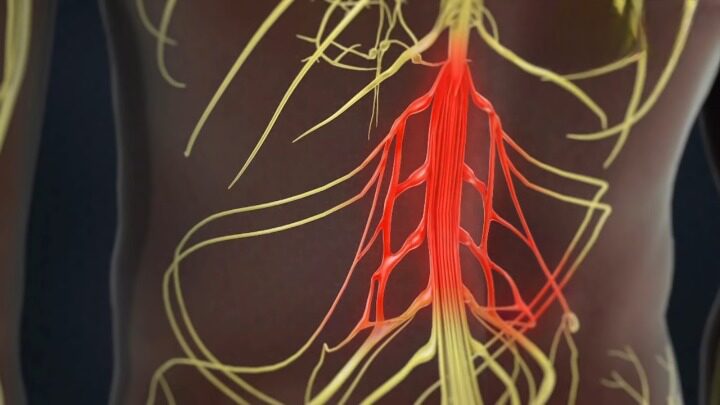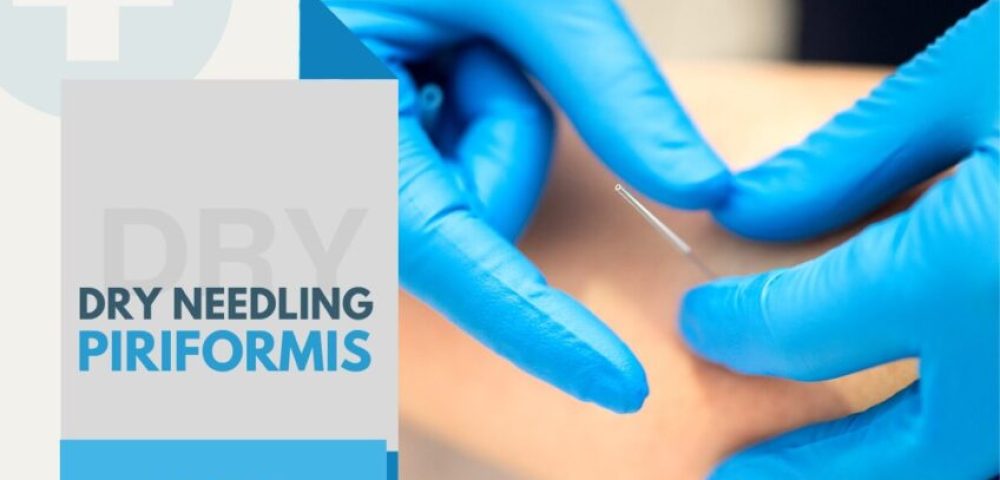If you’re looking for a way to ease sciatic nerve pain, then you should consider trying dry needling piriformis. This age-old technique has been proven to effectively reduce sciatic nerve pain, and provide relief and comfort to those who suffer from it. Read on to learn more about the benefits and effectiveness of dry needling piriformis for sciatic nerve pain – you won’t regret it!
Page Contents
Introduction to Dry Needling
Dry needling is a type of treatment used to help relieve chronic pain, particularly muscle pain. The technique relies on the insertion of thin filiform needles into painful trigger points in muscles, which helps induce a healing process. Dry needling can be used to treat a variety of muscular issues including tightness, soreness and even muscle spasms.
It is most commonly used as a form of therapy for chronic piriformis syndrome—a condition characterized by inflammation and strain in the piriformis muscle.
When this muscle is too tight or strained, it can press against the sciatic nerve located underneath it, causing severe sciatic nerve pain. By performing dry needling at particular trigger points on the piriformis muscle, relief from sciatic nerve pain can be achieved without subjecting someone to invasive treatments or surgery.
The dry-needle technique works by inserting needles into the affected area at varying lengths and using manual manipulation techniques like stretching or vibration before and after insertion to further relax contracted muscles.
The technique stimulates the body’s natural healing processes by promoting circulation and activating cells that reduce inflammation and swelling around affected areas. This helps to relieve pain caused by sciatica as well as increase mobility in those with chronic back issues caused by tightness in the piriformis muscle.

Benefits
The primary benefit of dry needling for Piriformis syndrome is relaxing these trigger points in such a way that allows them to envelope the nerve rather than compressing it. This creates more space between the sciatic nerve and piriformis muscle which can help make symptoms significantly less severe or even totally disappear.
In addition, releasing these previously tight muscle knots can provide relief from accompanying symptoms such as discomfort in both the hip and buttock area, tingling or numbness in the leg, and shooting pains down the back of the leg into the foot which often worsen when sitting.
Other benefits may include improved muscular mobility, improved blood flow as well as better movement control within damaged tissue structure which allows functional improvement without local tenderness or irritability. Ultimately, dry needling along with other supporting treatment plans can be very effective at providing long-term relief from sciatica pain caused by tight piriformis muscles.
How Dry Needling Treats Piriformis Syndrome
Dry needling or intramuscular stimulation (IMS) of the piriformis muscle is an effective treatment for piriformis syndrome, which is a condition that causes shooting pain along the sciatic nerve.
The piriformis muscle is a small, pear-shaped muscle located deep in the buttock near the hip joint. It runs from the sacrum to the greater trochanter at the top of the thigh bone and helps to stabilize the hip joint, flexing and externally rotating the leg. When this muscle becomes inflamed or tight due to overuse or injury, it can compress or entrapment of the sciatic nerve resulting in pain, numbness, and tingling in one or both legs.
Although dry needling is sometimes used as a standalone treatment for piriformis syndrome, it is often combined with other treatments such as physical therapy exercises and massage therapy. Dry needling interrupts patterns of tightness in muscles and soft tissue that may be causing pressure on nerve tissues.
During treatment, thin monofilament needles are inserted into precise points along muscular fibers – which are called trigger points – that are associated with painful symptoms. As these points are stimulated with needles they help to reduce spasms and pain while restoring the normal function of affected muscles.
By restoring the normal functioning of surrounding muscles and soft tissue structures in combination with specific physical therapy exercises most people can enjoy signs of relief within several dry needling sessions for piriformis syndrome.
What is Piriformis Syndrome?
Piriformis syndrome is an uncommon neuromuscular disorder that occurs when the sciatic nerve, which runs from our lower back and down through our legs, is compressed or otherwise irritated by the piriformis muscle in the buttocks.
The main symptom of Piriformis Syndrome is sciatic nerve pain, which can vary greatly in intensity and location. The pain may start in the lower back, radiating down the buttock and leg. Pain may also worsen with prolonged sitting, running and climbing stairs.
Other accompanying symptoms may include tingling or numbness in the leg; a burning sensation; weakness of hip abduction (the ability to kick outwards); and difficulty rising from sitting or squatting positions.
Diagnosis and treatment of Piriformis Syndrome generally involve locating trigger points within the piriformis muscle with manual palpation or dry needling. Dry needling works to reduce stiffness and sensitivity of muscles by releasing chemicals that cause an anti-inflammatory response that helps to relieve pain and restore mobility over time. Your doctor may also recommend physical therapy exercises to stretch muscles in order to improve flexibility, strength, and range of motion.

How to Diagnose It
Piriformis syndrome is a condition where the piriformis muscle, which lies deep in your buttocks, becomes shortened, tight or contracted. This can cause narrowing of the sciatic nerve and can manifest as pain and numbness down the back of your legs.
To diagnose piriformis syndrome, your physician will take a medical history, perform a physical examination and if necessary may order imaging studies such as X-rays or MRIs. They might also assess the muscle strength and flexibility of your lower extremities.
From there, muscles tender to touch or on resisted movement are typically identified as likely sources of tension on the sciatic nerve. Other soft tissue issues such as fascia adhesions may be seen in these examinations too. Once an assessment has been made by your medical professional you may then be referred for dry needling to help relieve tensions on this area that might be causing dysfunction within this pathway.
How to Prevent

Stretching plays an important role in preventing Piriformis Syndrome. Specific stretching exercises can help reduce the tension built up in the muscle over time through a combination of static stretching, dynamic stretching, and active-isolated stretches.
Dry needling can also be an effective way to help reduce tension built up within the piriformis muscle and address trigger points within its belly which may cause pain along its pathway down to the sciatic nerve. With dry needling, a thin filiform needle is inserted into trigger points within the belly of the piriformis muscle with the intention of releasing or breaking up those painful knots found at these trigger points that are causing pain along your sciatic nerve or hip area.
In addition to stretching and dry needling, another step you can take to prevent Piriformis Syndrome is incorporating foam rolling sessions into your daily routine on a regular basis as foam rolling promotes circulation and healthy muscular relaxation throughout your muscles, including those that may be affected by this condition such as your gluteus medius, maximus, minimus and other muscles within your legs and hips area.
Foam rollers also provide similar benefits to those offered by dry needling without having to use needles! Finally, it is important to avoid activities or postures that could further contribute toward increased tightness or strain on these targeted muscles. For example, if you spend long periods sitting at work during workdays then it may be helpful for you to look into finding ways to move throughout that working day such as taking frequent breaks for light walks or using higher chairs with footrests instead of low-level chairs without those supports so you can alternate between standing-sitting postures during your workday days instead of only remaining seated indefinitely!
Conclusion
Dry needling of the piriformis can provide great relief for those suffering from sciatic nerve pain. This therapy targets the tight muscles releases pressure on the nerve and soothes symptoms to help you get back to your normal activities. When injections are performed correctly with evidence-based protocols and experienced professionals, they have a high success rate in bringing prompt symptom relief.
Dry needling of the piriformis may provide long-term benefits depending on the severity and length of time one has been suffering with their particular condition. It is important to note that physical therapy and other methods may also be beneficial in treating sciatica symptoms and should be discussed with a qualified medical provider. Discuss the potential risks and benefits of dry needling for your particular condition with a qualified medical professional to determine if this treatment is right for you.
Astrona Knight is the Editor-in-Chief at Fischer Institute, where she shares her extensive knowledge on health and wellness topics. Her insightful articles cover everything from diet and nutrition to mental health, providing readers with practical tips and the latest research findings.
Also Read:
- Dry Needling for Plantar Fasciitis: Is It Effective?
- Piriformis Syndrome: Signs, Symptoms & Treatment
- Do You Have Underboob Rashes? Find Out What Causes…
- Can Hemorrhoids Cause Vulvar Pain? - Understanding…
- Does Peripheral Neuropathy Pain Get Worse in Cold Weather?
- 8 Best Supplement For Arthritis In Hands - Relieving…















